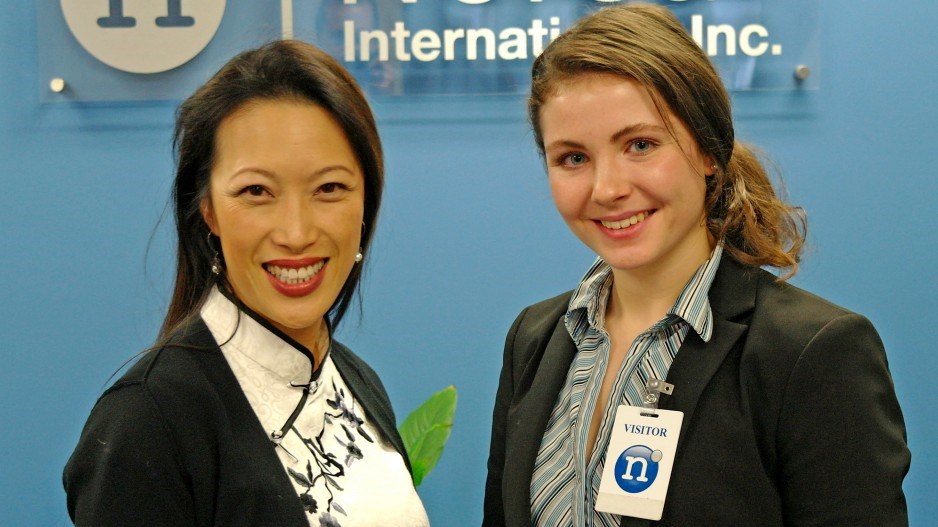Amiee Chan couldn’t help but notice on a business trip to South Korea that vendors for Norsat International Inc. (TSX:NII) would constantly open doors for her company’s supply chain manager as the pair toured facilities.
It was up to the head of the company to open all her own doors.
“They thought he was the CEO and I was the assistant,” said Chan, who earned a PhD in satellite communications from the University of British Columbia (UBC) at a time when only one or two women would be in any given engineering class.
“I was just laughing because he’s such gentleman. They’d pull out a chair for him and he’d go walk around and pull out a chair for me.”
Chan, who has served as the satellite communications company’s CEO since 2006, said it wasn’t the first time someone dismissed the possibility that a female engineer might be at the helm of Norsat.
While she had a number of mentors in the business world while working her way up the corporate ladder, few of them were women.
It’s a trend she doesn’t want repeated for young female engineers.
In mid-February, Chan agreed to allow UBC mechanical engineering student Jasmine Nikkari to shadow her as part of Odgers Berndtson’s CEO x 1 Day program.
“Up until now a lot of my female role models have not been in the engineering field,” the 21-year-old said.
“But to see a strong, successful woman in a position of leadership as a company CEO [who] has totally turned the company around … is a great chance.”
The third-year student arrived early in the day and sat in on meetings between Chan and other executives, even participating in a cup-stacking challenge during lunch-hour Lunar New Year festivities.
Nikkari said the opportunity to witness first-hand a CEO tackling marketing strategies at a satellite communications wasn’t something available in many classrooms.
But to witness a female engineer do it, too, wasn’t something she is certain happens in many corporate offices.
Despite efforts by Chan and other female engineers to develop more female role models in the region’s technology sector, B.C. continues to fall behind.
Data from the Ottawa-based Engineers Canada industry advocacy group shows only 18% of those enrolled in undergrad engineering programs in 2012 were female. That’s a decrease from 2001, when 21% of undergrad engineering students were female.
Furthermore, the West Coast lags behind the rest of Canada with women making up only 15% of B.C. undergrad engineering students in 2012.
Even Engineers Canada is pacing itself when it comes to creating gender equality in the profession.
According to a 2014 proposal from its Women in Engineering committee, the group set the goal of ensuring 30% of newly licensed engineers are women by 2030.
Engineering associations in seven provinces endorsed the goal. No engineering associations in B.C. have gotten on board.
Chan said it will take a big push by top-level management to see significant progress made in getting more women involved in engineering.
“Leaders, when they can, should try and introduce more diversity into the workplace,” Chan said, adding that more diversity leads to better business practices when people are examining problems from different angles.
“The biases in society are not as strong as they used to be, but they’re still there.”
@reporton



